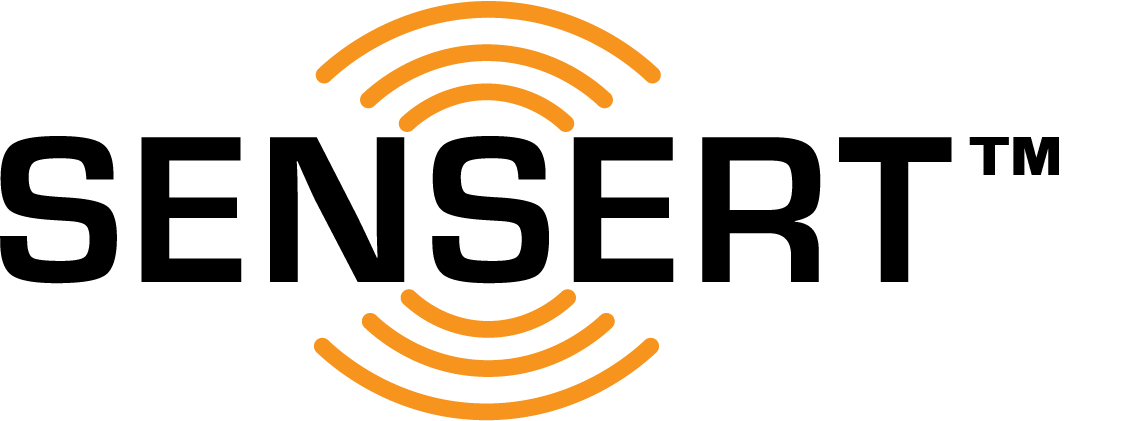FAQs
Account Level
-
Yes, you can perform a factory reset and transfer the hardware. However, service subscriptions are non-transferable.
-
Please see here for more information on payment methods: https://www.paypal.com/us/webapps/mpp/popup/about-payment-methods
-
Please see here for the security statement from Paypal: https://www.paypal.com/us/webapps/mpp/paypal-safety-and-security
-
Alerts (received instantly) and data logging (reported either every 30 seconds or every 5 seconds depending upon subscription plan).
Communication
-
SENSERT requires a 2.4 GHz WiFi network and will not work on other WiFi networks such as 5 GHz.
-
No, the WiFi network must be a secured network with a password and no secondary steps for connection (i.e. dialog box).
-
SENSERT will alert and send a notification if WiFi or cellular connection is lost.
SENSERT cannot send alerts based on data collected during a communication outage. Once communication is restored, any alerts that occurred during the outage will be sent.
-
Yes, SENSERT will continue to record data if there is a loss of communication [8096 points]. Once communication is restored, the newest data will be uploaded to the cloud first.
-
Yes, but you must enter MESH mode [CONFIGURATION (far right icon) -> WiFi icon (very top right)]. This direct communication can be used for initial setup, to modify settings, or to view real-time data but will not show data history or send alerts. Direct Bluetooth communication is not recommended for "everyday use".
-
The Remote I/O can communicate with the Base Unit from up to 100 m away (line-of-sight). Exact communication distance will be affected by objects between the Base Unit and Remote I/O and any outside wireless interference.
-
Yes, but they must be hard wired as Bluetooth Mesh will not work on battery power.
-
Each Base Unit can have a maximum of 5 Remote I/O's nested under it. In order to use more than 5 Remote I/O's, you must use additional Base Units.
-
See here for a full description from Bluetooth.
https://www.bluetooth.com/learn-about-bluetooth/recent-enhancements/mesh/
Data
-
We use Amazon Web Services (AWS) for our cloud data storage. (https://aws.amazon.com/security/)
-
Data is overwritten every 45 days, so we recommend you download your data, at a minimum, monthly (every 30 days).
-
Data is transmitted from the Remote I/O to the Base Unit at a maximum frequency of every 30 seconds. Increasing this time will increase battery life but will also dictate how often alerts are received (i.e. alerts are only received from the Remote I/O based on the defined reporting timeframe).
Hardware
-
The WiFi version of the Base Unit can be used anywhere in the world, depending upon local certifications. The cellular version of the Base Unit can only be used within the United States, currently. The Remote I/O can be used anywhere in the world, depending upon local certifications.
-
Both the Base Unit and Remote I/O have a rating of IP20.
-
Any modification of the antenna will void FCC certification.
Power
-
The Base Unit can be powered 9-30 VDC via terminals 13 and 14 or 5 VDC via the Micro-B USB port located above terminal 23.
-
The Remote I/O can be powered 9-30 VDC via terminals DC+ and DC- or via battery power (CR2450).
-
The Remote I/O uses battery type CR2450 (some older/prototype units may use battery type CR2032).
-
Battery life depends upon data transmission frequency (i.e. how often data is transmitted from the Remote I/O to the Base Unit). If the Remote I/O is set to 30-second reporting and is using only 1 channel, on average the battery will last approximately 2 months. We recommend using hardwire power (9-30 VDC) when possible.
-
The Remote I/O's LED will flicker red, indicating low battery. Low battery will also be indicated on the Web Portal [DEVICES -> DEVICE ID -> Device general] or Mobile App [DEVICES (middle icon) -> DEVICE ID).
-
No, the Base Unit requires power to send alerts or record data, even if the Remote I/O is powered via battery.
Sensors
-
Any type of sensor that meets the input/output compatibility listed in the technical specifications.
-
Yes, the Remote I/O has built-in vibration sensors (mg).
Software
-
Initial device setup (Base Unit and Remote I/O) must be done using the Mobile App and payment activities must be done on the Web Portal. Otherwise, all functionality is identical.
-
Admin - Full permissions.
Device Manager - Same permissions as Admin, except subscription/payment activities.
Installer - Only able to setup devices, modify device settings (not able to delete devices), and view dashboards.
Viewer - Only has permission to view a dashboard.
-
Alerts will be received instantly, once per reporting period (i.e. 30 seconds or 5 seconds or however it is set). Multiple alerts during the same reporting period will not be sent more than once.

